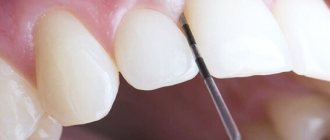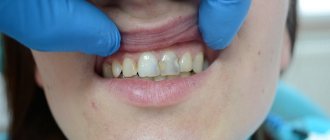15.09.2016
Author: Kuzub Yana Nikolaevna
To keep teeth healthy, both the general condition of the body, good hygiene, timely treatment, and the foods that the patient eats daily are important. Dentist-therapist at the Attribute Clinic, Yana Nikolaevna Kuzub, shares useful information about what foods and drinks are healthy, and what you should avoid to maintain a healthy smile.
WATER
Since the human body consists of more than half of water, it is logical to conclude that water is an important product for our body. Water is also good for dental health.
If you drink little water during the day (precisely water. Juices, soda, tea, coffee, soups do not count), among other negative consequences, you will experience a feeling of dry mouth. This means that not enough saliva is produced: a logical consequence of dehydration, because saliva is 98.5% water.
The composition of saliva includes mucins (no more than 0.5% of the total chemical composition of saliva). Due to them, saliva not only has viscosity and elasticity, but also prevents the formation of bacterial plaque, because blocks the proliferation of harmful microorganisms.
However, you need to know that saliva can harm your teeth if you like sweets. In this case, it will contain large amounts of glucose, as a result of which it will only harm tooth enamel.
In addition to the fact that the possibility of salivation that protects teeth depends on water, water helps to mechanically clean the oral cavity of food debris, plaque and acids harmful to tooth enamel.
What to do if an adult has a gap between teeth
Getting rid of the gap between the incisors is not easy, but modern dentistry still helps to remove it forever. The duration of correction depends on the method of therapy, the age of the person and the presence of contraindications.
Cosmetic restoration
Filling reduces the gap if it is small. The doctor will close the gap with a composite material, and the gap between the incisors will remain invisible. The method is accessible and cheap - about 3 thousand rubles, but is short-lived and can cause a change in the color of the filling.
A more reliable method is artistic restoration of teeth. In this case, a composite is also used, but of higher quality using ultraviolet light. It is possible to visually close the gap 100%. Such a procedure in restoration therapy costs 10 thousand rubles.
Surgical intervention
If the gap has formed due to the frenulum, an operation is performed to correct the defect, which will allow the jaw row to return to its normal position and the gap between the teeth will decrease on its own.
After frenuloplasty, orthodontic treatment is recommended for final correction and consolidation of the result. The operation to remove the frenulum costs about 4,000 rubles.
Orthodontic treatment
Braces for diastema are very popular. They work more effectively in adolescents, but also help correct the problem in adults. Treatment with braces takes from 1 to 3 years. Depending on the type of structure and the material from which it is made, the cost of correction ranges from 50 to 120 thousand rubles.
Aligners are also used. They can remove chipped teeth without braces or diastema restoration. The aligners put pressure on the teeth, moving them into a predetermined position. Using these devices to treat diastema will not be cheap - the price of correction starts from 100 thousand rubles.
Three methods of eliminating diastemas include veneering. You can fix a gap in an adult with veneers quickly and effectively. Visually, they cannot be distinguished from real teeth. Before closing the diastema with veneers, the oral cavity is prepared. The products last more than 10 years. The cost of veneers is from 15 thousand rubles per unit.
In addition to veneers for diastema, lumineers help correct gaps in adults. They look impressive and do not require sharpening of the cutters; they last for about 20 years. The cost of one lumineer starts from 30 thousand rubles.
Also in orthodontics, metal and ceramic crowns are used to eliminate diastema. A crown lasts 20 years or more, the cost of high-quality material for one product is 20 thousand rubles.
VEGETABLES, FRUITS, BERRIES, GREENS
Everyone knows that vegetables, unsweetened fruits and greens should be an important part of every person’s diet in order to maintain the balance of vitamins, minerals and other beneficial microelements in the body.
However, fresh vegetables, fruits and herbs are important for dental health, as they provide essential vitamins and minerals.
It is important to focus your diet on carrots as a source of keratin, pumpkin, which can restore white teeth due to the selenium it contains, and greens, especially spinach, which is rich in calcium.
Vegetables and greens enrich saliva with minerals that are beneficial to the health of tooth enamel (phosphate, fluoride, calcium).
It is important to understand that minerals are “leached” from teeth over time. Therefore, for the health of your teeth enamel, you must remember to eat fresh vegetables, herbs and unsweetened fruits.
Don't forget to take care of your gum health. Hard varieties of vegetables and fruits will help with this. Chewing solid food has a massage effect on the gums, thereby improving blood circulation in the mouth.
Greens will help take care of healthy oral microflora (parsley is especially good for this task), because contains antibacterial substances that can stop inflammatory processes, get rid of bad breath, and prevent caries.
Types of diastema
In dentistry, there are two types of diastema:
- True - observed with constant occlusion and does not disappear after specialized treatment. The size of the gap in the teeth varies from 2 to 6 mm, less often the distance reaches 10 mm.
- False - occurs during the period of replacement of the primary occlusion. In many children, the anomaly disappears on its own after the molars erupt.
Depending on the occlusion and deviation of the teeth, diastema can be:
- Symmetrical - the incisors are equally deviated, mirroring each other.
- Asymmetrical - one incisor is deviated, the second remains in the anatomically correct position.
Pathology can also be of the following types:
- Diastema of lateral type with regularly located roots. The gap between the teeth has the shape of a triangle, the apex of which is located at the frenulum of the upper or lower lip (with diastema of the lower teeth).
- Parallel type diastema with lateral displacement of tooth crowns. The gap on the front teeth does not exceed 4 mm and does not lead to an abnormal bite, so many patients do not correct the diastema.
- Diastema with deviation of the incisors in the central part according to the medial type and at the roots - according to the lateral type. In this case, the gap has the shape of a triangle, but its apex is located at the lower border of the crowns.
ICD-10 code: K10 Impaired development of the jaws.
NUTS and SEEDS
Nuts and seeds contain substances beneficial for teeth in particularly concentrated quantities, and therefore it is extremely important to eat them regularly.
It will be good if you eat not the same type of nut always, but different varieties of seeds and nuts. Introduce walnuts and pine nuts, hazelnuts and Brazil nuts, sesame seeds, sunflower seeds, and flax into your diet. This is important because the composition of nutrients in each nut is different, and therefore the effect is different for everyone. For example, pine nuts help the development of dental bone tissue.
At the same time, remember that cracking nuts with your teeth is a procedure that is traumatic for the tooth, so it is better to avoid it. For the same reason, it is harmful to crack seeds.
Why does a gap appear between the front teeth?
Diastema is inherited in 50% of cases. In other cases, its causes are:
- short frenulum of the tongue;
- low location of the frenulum of the upper lip or its massiveness;
- microdentia;
- supernumerary impacted teeth;
- late eruption of permanent teeth;
- jaw tumors;
- early loss of baby teeth;
- pathological growth of the entire group of anterior teeth.
Also, the gap between the front teeth in children and adolescents appears due to:
- lip biting and nail biting habits;
- prolonged use of pacifiers and pacifiers;
- passion for seeds and nuts.
On a note!
Physiological or false diastema of the upper teeth does not require treatment. In the future, in adolescents, the cleft disappears when the molars erupt. If the pathology develops again, it is necessary to remove the gap between the front teeth.
What foods are harmful to teeth?
SWEET DRINKS
Sweet carbonated drinks are harmful to the body, especially to the teeth.
So-called soda and juice packages contain a lot of sugar, which not only destroys enamel, being a breeding ground for harmful bacteria, but also changes the chemical composition of saliva, saturating it with glucose, which also has an additional detrimental effect on dental health.
In addition, such drinks contain additives that can disrupt metabolic processes in the body.
Since sweets are harmful to teeth, you should not get carried away even with freshly squeezed natural juices, sweet fruits and berries. The fruit acids and glucose they contain can destroy tooth enamel.
Plain water will help prevent the negative effects of natural juice: just rinse your mouth with it.
SWEETS
Sweets can not only destroy a tooth, but also interfere with its natural restoration, because... The sugar they contain interferes with the absorption of calcium.
The only permitted sweet product can be dark chocolate, but only with a very high cocoa content. This chocolate can even prevent plaque because it contains antibacterial substances.
And if you really want to, please don’t forget to use dental floss after eating and rinse your mouth with water after eating.
DRIED FRUITS
This seemingly useful product, from the point of view of dental health, has a significant drawback - the viscosity of the product structure. This causes them to stick and get stuck in your teeth. Therefore, after eating dried fruits, you should not forget to use dental floss.
CAFFEINE
Coffee and other drinks containing caffeine dehydrate the body, interfere with absorption, and lead to vitamin and mineral deficiencies (including calcium). If you find it difficult to give up coffee, replace it with chicory.
Many people do not know that caffeine is found not only in coffee, but also in black and, especially, green tea. So if you like green tea (or black), try replacing it with herbal tea.
SIMPLE CARBOHYDRATES
And again about sugar. It is found not only in sweets and sugar. Simple sugars are part of starch, which, among other things, consists of potatoes (which is why dishes made from them are so unhealthy), and high-grade white flour.
If you find it difficult to give up flour products, switch to products that include whole grain flour.
ALCOHOL and MEDICINES
When drinking alcoholic drinks, try to dilute them with water, if possible, and then brush your teeth. In addition to the fact that alcohol contains a lot of sugar, which has a detrimental effect on enamel, it also causes dehydration, which means that the production of saliva, an important tool for protecting teeth and oral microflora, is reduced.
Just like alcohol, some medications can cause dehydration, so be sure to drink plenty of fluids while taking your medications.
Roasted nuts and seeds
Only fresh nuts and seeds, in particular, are good for the body and teeth. Fried ones, on the contrary, are harmful. And here's why: the beneficial substances contained in the fresh product are destroyed during the frying process. Moreover, harmful substances are formed in large quantities.
If you can't avoid roasted nuts or seeds, it will be less harmful to your health if you buy them fresh and only lightly roast them yourself at home.
Dental prosthetics: possible complications
Dental prosthetics is one of the most sought after and popular medical procedures all over the world. However, this is nothing unusual: sometimes only the installation of dentures can help a person facing serious dental problems regain a beautiful and healthy smile. Meanwhile, the prosthetic procedure, just like other medical procedures, can lead to a number of complications. Identification of any signs signaling the development of a particular pathological process in the oral cavity is the basis for a visit to the doctor and taking measures aimed at eliminating the defect that has arisen.
Causes of complications after installation of dentures
The main reasons for the development of complications after the installation of prosthetic structures are:
- violation of the procedure for preparing for the installation of dental prostheses (refusal from professional sanitation of the oral cavity, from taking measures aimed at combating inflammatory gum diseases, dental caries, dental plaque, etc.);
- errors made by employees of dental laboratories (manufacturing dentures that do not fit the patient in size, violation of technical requirements);
- improper installation of the prosthetic structure, resulting in the appearance of wide gaps between the gums or prosthesis and the accumulation of food debris and bacteria in them (in some cases, on the contrary, there is a too tight fit of the prosthesis to the gum, which contributes to the appearance of physical discomfort and the development of inflammatory processes in the gum tissues) ;
- damage to the prosthetic structure, accompanied by its breakage or displacement;
- allergy to materials used in the manufacture of the prosthesis;
- weakening of the body's immune forces;
- changes in the position of individual teeth, leading to displacement of the prosthetic structure;
- failure to comply with hygienic requirements, leading to inflammation of the gums under the prosthesis, carious lesions of the supporting teeth.
Types of complications after installation of dental prostheses
The most common complications that develop after completion of the prosthetic procedure are:
- prosthetic stomatitis;
- caries, pulpitis and other dental diseases under prosthetic structures;
- peeling off fixed dentures after their installation;
- loosening of the fastenings of removable prosthetic devices;
- galvanic syndrome;
- allergic reactions;
- physical discomfort caused by the installation of prostheses.
Denture stomatitis is an inflammatory lesion of the gum tissue under the denture, accompanied by the appearance of small pustules and ulcers on their surface. The main cause of this pathology is the compression of small blood vessels of the gum by the prosthesis, the death of soft tissue cells and the formation of bedsores. To eliminate the manifestations of prosthetic stomatitis, patients are recommended to contact their dentist with a request to adjust the prosthetic structure and conduct a course of local treatment using antiseptic solutions, ointments and gels.
Caries, pulpitis and other dental diseases under dentures arise due to non-compliance with hygiene requirements. To ensure that the prosthetic structure does not put too much pressure on the gum tissue, it is always installed in such a way that there is a small space between its lower edge and the gum. Pieces of food and bacteria accumulate in this space, which can provoke the appearance of an unpleasant odor, the development of an inflammatory process and caries. That is why this small gap needs careful care (rinsing with water and antiseptic preparations, cleaning with dental floss, carrying out professional hygiene measures at the dentist).
The reasons for the permanent prosthesis to come off after installation may be:
- loss of a tooth and gradual displacement of the remaining teeth towards the resulting space;
- excessive physical stress on the prosthetic structure;
- change in bite;
- damage to supporting teeth.
A loose prosthesis is returned to its original place by gluing it with a special dental compound. If necessary, the prosthetic structure can be replaced with an alternative device.
Factors contributing to loosening of removable prosthetic devices are:
- daily wear;
- regular removal and re-fastening of the structure.
Over time, the elements that secure the prosthesis in the patient’s mouth completely fail. The problem is resolved by adjusting the fasteners by dental laboratory specialists.
Galvanic syndrome is the formation of galvanic electric current in the oral cavity. The main reason for this phenomenon is considered to be the presence of dissimilar metals in the patient’s mouth. It is known that any alloy immersed in an electrolyte solution acquires a potential unique to it. If metals with different potentials are present in the patient’s oral cavity, then all the conditions necessary for the formation of galvanic current arise. In such situations, saliva performs the function of an electrolyte.
Galvanic syndrome is characterized by:
- the appearance of a metallic taste in the mouth;
- sleep disturbance;
- headache;
- allergic reactions;
- darkening of metal parts of prostheses;
- deterioration of the patient's general condition.
The described problem is resolved by replacing dentures.
An allergic reaction to materials used in the manufacture of prosthetic structures is perhaps the most common complication of the prosthetic procedure. The main symptoms of this pathology are:
- redness and swelling of the mucous epithelium of the oral cavity;
- the appearance of a rash on the skin of the hands and face;
- inflammation of the salivary glands;
- asthma attacks;
- dryness and burning in the mouth.
The first signs of an allergy appear immediately after the installation of a prosthetic device or several hours later. In some cases, the body's hypersensitivity reaction develops 2-3 days after completion of the prosthetic procedure. If any symptoms indicating the occurrence of an allergy are detected, it is necessary to consult a doctor as soon as possible with a request to eliminate the pathological process and replace the prosthetic structure.
Physical discomfort that occurs after the installation of prostheses can bother the patient for 10-15 days.
Most often, people who have undergone prosthetics experience impaired speech functions, increased salivation, the sensation of a foreign body in the mouth, and rubbing of the gums or the inside of the cheeks. In cases where unpleasant symptoms do not go away on their own for more than three weeks, patients are advised to consult a dentist to take the necessary measures to adjust or replace the prosthetic structure. Sign up for a consultation
Causes and types of interdental gaps
This feature can appear for many reasons. The following conditions most often lead to this:
- Genetic factor.
- Strongly pronounced interdental papillae.
- Incorrect placement of the labial frenulum.
- Late appearance of molars.
- Delayed development of the dental system, slow process of formation of the anterior incisors.
- Injury to the anterior chewing units (injuries that occur in childhood are very dangerous; they can significantly affect the shape of the teeth in adulthood).
- Gum diseases.
- Presence of supernumerary incisors.
- Microdentia (pathologically small teeth).
Before you remove a hole between your teeth, you should know that there are not only true, but also false diastemas. They vary depending on the time of appearance:
- False. Parents notice it in childhood, when the child has baby teeth. After they are replaced with permanent ones, the gap may disappear on its own.
- True. It is formed after the change of teeth and the formation of the bite. This gap can only be removed with the help of professionals.
Gaps between teeth can have different types of displacement. The following types are distinguished:
- Lateral deviation. The roots are parallel, and the chewing units diverge.
- Corpus lateral displacement. Not only the teeth change position, the roots also shift along with them.
- Medial tilt. The most complex type of deviation. There is a displacement of teeth with roots, and chewing units can tilt not only to the side, but also around their axis.
In addition, there is another difference in diastemas. They can be symmetrical or asymmetrical:
- Symmetrical. The gap is located in the center of the dentition; the incisors have a symmetrical appearance.
- Asymmetrical. The incisors have different shapes; one of them can be positioned straight, while the other deviates in any direction.
It is not always possible to predict how the gap will change. Sometimes it remains the same for many years, and sometimes it begins to expand. In some cases, this feature can cause other problems.
Is it possible to remove a hole at home?
It is impossible to remove gaps between teeth at home. Some people try to physically move the hole between the teeth or close the gap with filling material. These methods are unsafe; all that a person who tries to get rid of a gap in this way can achieve is to get a complicated diastema due to loose teeth or lose them altogether.
Therefore, when thinking about how to hide the gap between the incisors, there is no need to experiment on yourself. This problem can be successfully corrected in specialized clinics, not at home.








